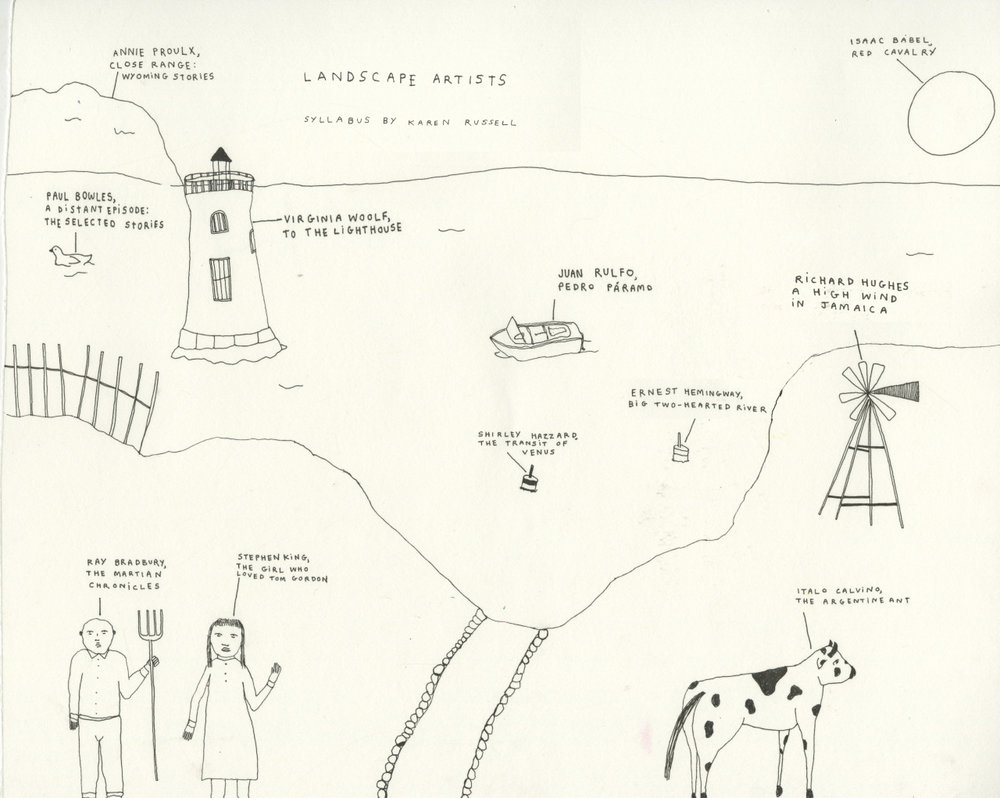
“IT WILL KILL YOU, AND IT NEVER KNEW YOUR NAME.”
An Interview with Karen Russell About Her Syllabus
This is part of a series of conversations with writers who teach, where we discuss how they develop an idea for a course, generate a syllabus, and conduct a class. See the full syllabus here.
Karen Russell is the author of the novel Swamplandia!, a finalist for the 2012 Pulitzer Prize. She is also the author of two short story collections, Vampires in the Lemon Grove and St. Lucy’s Home for Girls Raised by Wolves, and a novella, Sleep Donation. Russell is the recipient of a 2013 MacArthur Fellowship, and she has taught at Columbia University, Bard College, and Bryn Mawr College.
—Stephanie Palumbo
I. THE SPOTS ON THE LITERARY TRAM TOUR
SP: Where did you teach this class?
KR: At the Iowa Writers’ Workshop. I should tell you I’m a little bit self-conscious, because I’d never taught this class before and was afraid I had the reek of fraudulence upon me.
SP: I think most teachers feel that way.
KR: Yeah… We’ve been duped, right? [Laughs] But actually, I had a class with Bill Savage at Northwestern, on female writers of the Beat Generation like Djuna Barnes—folks that I’d never read, and he hadn’t read them either. He was upfront about it: he would teach books he wanted to read, and we’d all be co-equals. I thought of him when I was teaching at Iowa, because I’d read and loved the books on my syllabus, but I’d never taught them before.
SP: How did you choose the theme of landscape stories for your syllabus?
KR: It’s interesting—some writers start with character, but I almost always start with place. If I don’t have a three-dimensional sense of the story’s setting—if I can’t see it in my mind’s eye—I can’t even attempt to make the story come to life. If you ask me about books I love, like Rule of the Bone by Russell Banks or Anna Karenina, it’s the setting, and the sense memory of moving through the landscape of the book, that stays with me far longer than names of characters or details of plot. So I was thinking, what makes a world immersive? What makes a place a character? I realized you could teach any book under that rubric—even something by Beckett, that’s asserting it’s nowhere, definitely has its own atmosphere—so I tried to limit myself to stories set in places you can visit on the map. But I also taught Pedro Páramo, which takes place in the Mexican underworld, and they don’t have Delta flights there. [Laughs]
SP:...
You have reached your article limit
Sign up for a digital subscription and continue reading all new issues, plus our entire archives, for just $1.50/month.
Already a subscriber? Sign in




